Buried Ships Historical Marker
Introduction
Author-Uploaded Audio
00:00 / 00:00
Listen to a narration of this entry's description by Jenevieve Hughes.
Text-to-speech Audio
Images
Buried Ships Historical Marker, placed in the sidewalk near The Embarcadero and Union Street
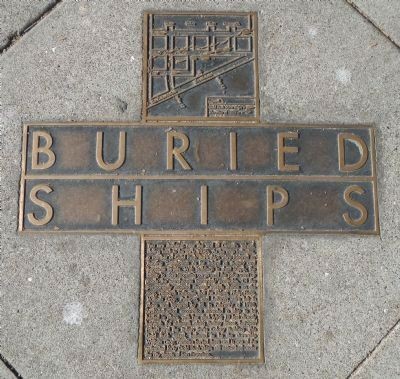
Illustrated Map of the Buried Ships of Yerba Buena cove (San Francisco) by Michael Warner et al. in 2017
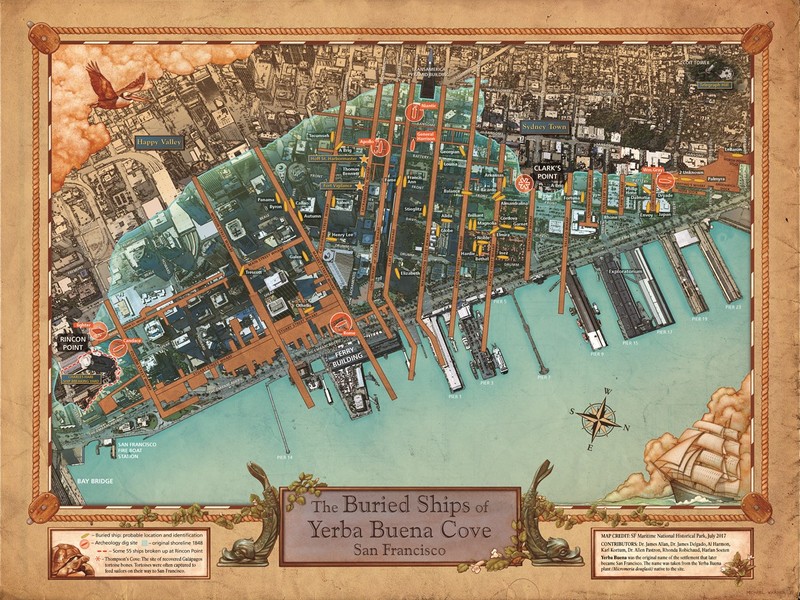
Illustration of abandoned Gold Rush Era ships being converted into buildings in Yerba Buena Cove (San Francisco)

The Old Ship Saloon (built in 1851) was originally opened in the hull of a sailing ship, the Arkansas. The hull of this ship is now buried below paved city streets, but the saloon still operates in at street level in a building at the same spot
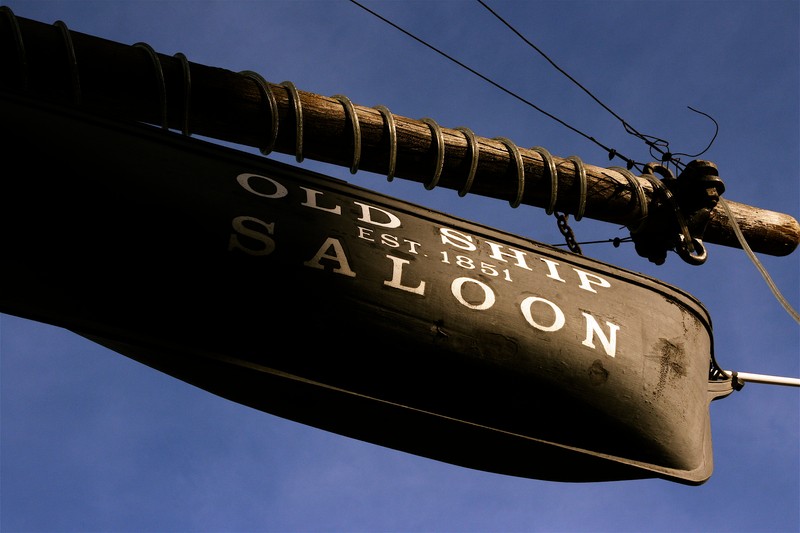
The waterfront area of Yerba Buena cove (San Francisco), as seen in 1851

A clipper ship advertisement, which enticed people to book passage to sail to San Francisco during the Gold Rush of 1849
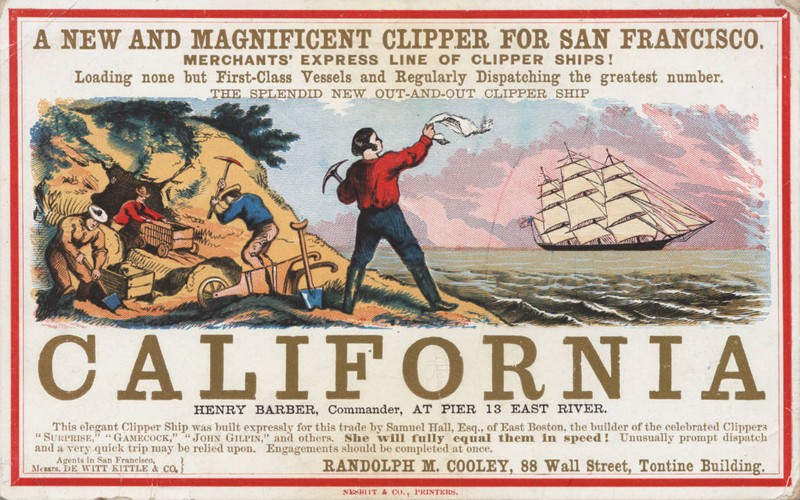
Abandoned sailing ships in Yerba Buena Cove (San Francisco), circa 1850
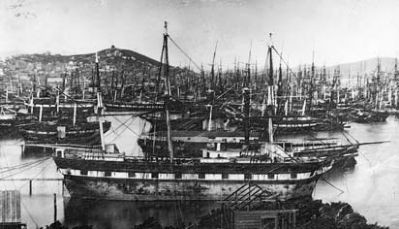
Map of Buried Ships in Yerba Buena Cove (San Francisco)
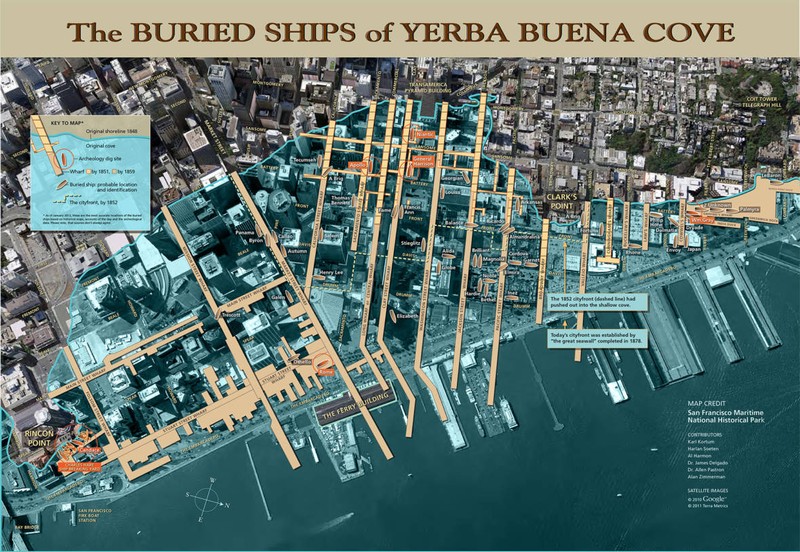
The Gold Rush era ship called the Rome is buried underneath this bocce court near the Ferry Building in downtown San Francisco
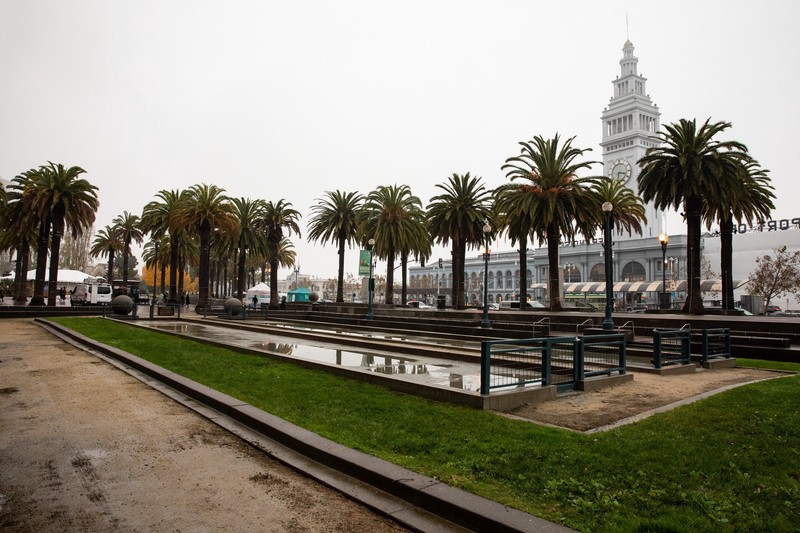
Backstory and Context
Author-Uploaded Audio
00:00 / 00:00
Listen to a narration of this entry's description by Jenevieve Hughes.
Text-to-speech Audio
Some forty or more sailing ships are buried well below the city sidewalks and downtown streets of San Francisco. The historic ships date back to the Gold Rush of 1849, when thousands of ships came to be docked in Yerba Buena cove, as the San Francisco Bay waterfront was then known. The Niantic, a whaling ship which originally hailed from Connecticut, was one of the first of such vessels to transport people from the east coast of the U.S. to the Pacific coast during the Gold Rush.
Carrying miners and other gold rush hopefuls from various parts of the U.S. and the world, the ships which successfully reached San Francisco were often simply abandoned in Yerba Buena cove upon arrival, as people raced onward hoping to beat the competition. Many such miners did indeed make it rich from the discovery of gold, while a number of others died trying. In both cases, many such individuals never returned to their ships.
To deal with the abandoned ships in Yerba Buena cove, the Port of San Francisco encouraged people to purchase "water lots" above abandoned ships. This entailed hauling the ships further ashore, driving pilings and fences around them, and filling in the "water lots" with earth. By scuttling or sinking a ship, a person could claim land rights above the area where the ship was sunk. Subsequently, several of the abandoned ships in Yerba Buena cove were repurposed as warehouses for storing goods. Others were used to house new local businesses and social gathering places, such as saloons, hotels, stores, and even churches. The Rome was one such ship that was purposely sunk in this fashion so that its owners could claim residency within the city.
In 1851, a massive fire swept through Yerba Buena cove. The fire burned up the timber of the remaining ships down to the waterline, leaving only remnants of their hulls underwater and in some cases, preserving whatever goods they contained within. Eventually, this portion of the land that was once underwater in Yerba Buena cove became fully filled-in, paved over, and built upon. Meanwhile, the wreckage of the old ships and whatever cargo was still contained in their holds became buried underneath the city. So it happened that some of the streets within San Francisco's Financial District, as well as the major thoroughfare known as the Embarcadero, emerged upon land that was once part of the bay.
Today, detailed maps indicate where the shoreline of San Francisco previously existed, revealing that the high-water mark once extended as far as Montgomery Street during the Gold Rush era. Few people today even realize that many of the city's high-rise skyscrapers and iconic downtown buildings, such as the Transatlantic Pyramid, were actually built upon land that was once below the sea.
The first ship to be discovered under the city of San Francisco was the Apollo in 1920. Remnants of this and other Gold Rush era ships are now on display for visitors at the San Francisco Maritime National History Park. As part of the National Park Service, this maritime museum shares the history of the buried Gold Rush-era ships within the context of its larger role in interpreting the centuries-long history of San Francisco and the sea.
Cite This Entry
Admin, Clio and Jenevieve Hughes. "Buried Ships Historical Marker." Clio: Your Guide to History. February 1, 2021. Accessed July 26, 2025. https://theclio.com/entry/94736
Sources
Buried ships in San Francisco, National Park Service. Accessed February 13th 2020. https://www.nps.gov/safr/learn/historyculture/buried-ships-in-san-francisco.htm.
Placzek, Jessica. "The Buried Ships of San Francisco", KQED News. November 23rd 2017. Accessed February 13th 2020. https://www.kqed.org/news/11633087/the-buried-ships-of-san-francisco.
Rasilla, Azucena. "What Lies Beneath: The Ships Buried Under San Francisco", The Bold Italic. January 13th 2020. Accessed February 13th 2020. https://thebolditalic.com/what-lies-beneath-the-buried-ships-of-san-francisco-f16b2a045532.
Swackhammer, Barry . "Buried Ships Historical Marker", The Historical Marker Database. December 20th 2013. Accessed February 13th 2020. https://www.hmdb.org/m.asp?m=70845.
Warner, Mark. Purser, Margaret. Historical Archaeology Through a Western Lens. Lincoln, Nebraska. University of Nebraska Press and the Society of Historical Archaeology, 2017.
Barry Swackhammer, The Historical Marker Database
San Francisco Maritime National Historical Park, National Park Service
Library of Congress
Jennifer Woodard Madera; KQED News
San Francisco Maritime National Historical Park, National Park Service
KQED News
Unknown; The Historical Marker Database
San Francisco Maritime National Historic Park, National Park Service
Cheryl Guerrero; The Bold Italic

